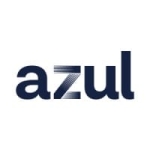We use the solution for DevOps for implementation release.
The boards within Microsoft Azure need improvement, especially compared to Jira, a widely utilized ticketing tool in various organizations. While Jira is cost-effective, Azure provides various features in one place through its DevOps console. However, some shortcomings in Azure's boards and Wachee require attention. These tools might suit specific industries and workflows, but enhancements in Microsoft Azure's boards and infrastructure are necessary for larger-scale enterprises with complex architectures.
I have been using Microsoft .NET Framework for two to three years.
The solution is stable.
Our client utilizes the Microsoft Stack. Therefore, we must collaborate with them for internal Proof of Concept (POC) and presentations to attract new clients. We have around 250 Microsoft users. Within this context, various components such as ETA, specific developers, working with Azure, and blockchain development are conducted within Azure.
The solution is scalable. We are using the enterprise-level subscription
Around 200 people are using Microsoft .NET Framework.
We have a dedicated support system and have subscribed to it specifically for enterprise-level digital data scripts from Microsoft, which provides us with reliable support lines.
I worked on alternate servers to build the .NET applications. I have created some pipelines for the automation practice.
I have used the .NET Framework to develop applications and build pipelines. Additionally, I have implemented multiple pipelines in the data science domain, handling data. It is easy to design and manage these pipelines.
If you spend some time delving into web development, such as watching YouTube videos, you can discover solutions that may not be as complex as AWS cases. However, Azure offers a user-friendly interface that simplifies configuration and pipeline creation. You don't need to write Java code because, with additional settings in your pipeline, Java can be automatically generated. Configure these settings, write the necessary scripts, and deploy. Azure provides an incredibly cool, user-friendly, cost-effective dashboard that allows you to do more using the GUI.
Deploying applications using the Microsoft .NET Framework involves creating a pipeline. It can be done quickly; within a few minutes, you can deploy applications.
I am the sole developer and engineer responsible for managing the entire pipeline creation process. This involves collaboration between developers and operational teams. My role encompasses implementing solutions and deploying them through Azure DevOps. The team has completed the website development, and my task now is to establish an efficient deployment pipeline that doesn't require extensive time for construction or interface.
We don’t need to pay any particular ownership charges for creating pipelines on the .NET service. We have a monthly subscription for the solution.
Azure offers numerous automation systems that are already predefined by Jira pipelines. Consequently, there's minimal intervention required as they come pre-configured for build tests and deployments. Our primary task involves configuring these setups according to our specific requirements—determining where we need to deliver and retrieve items, thus necessitating consideration for various concerns within the Azure pipeline.
Connecting components in building .NET applications becomes straightforward due to Azure's facilitation of these operations.
It doesn't require regular maintenance, but there may be instances where updates are necessary to address specific application issues or to ensure compatibility with certain updates. In the context of Azure, there is no need for additional maintenance tasks. Once a pipeline is created, the focus remains on managing that pipeline, addressing any configuration issues, or troubleshooting when necessary. There is no direct need for manual updates or upgrades for software-related updates, as Microsoft's internal IT manages these processes. There's no individual requirement for us to handle service upgrades or updates.
Microsoft Azure is highly efficient across server environments, including .NET and other frameworks like Java. It supports a wide array of servers available in the market today. Current technology seamlessly accommodates diverse server infrastructures, making it notably efficient and ideal for enterprise-level operations. I rate it a perfect five out of five for its performance in DevOps and delivering sophisticated solutions to complex challenges.
We've extensively utilized Azure in the logistics industry, implementing numerous solutions with a significant reliance on its services. Azure covers almost all data analytics, data science, and data engineering aspects. As a developer, I've been solely responsible for implementing and constructing nearly all pipelines within Azure DevOps to address these complex problems. This stands as a benchmark achievement.
Azure's user-friendly interface and productivity make it a standout solution within the Microsoft suite. I highly recommend enterprise resources consider migrating to Azure when contemplating a move to the cloud—it's the top choice.
Overall, I rate the solution a ten out of ten.





















